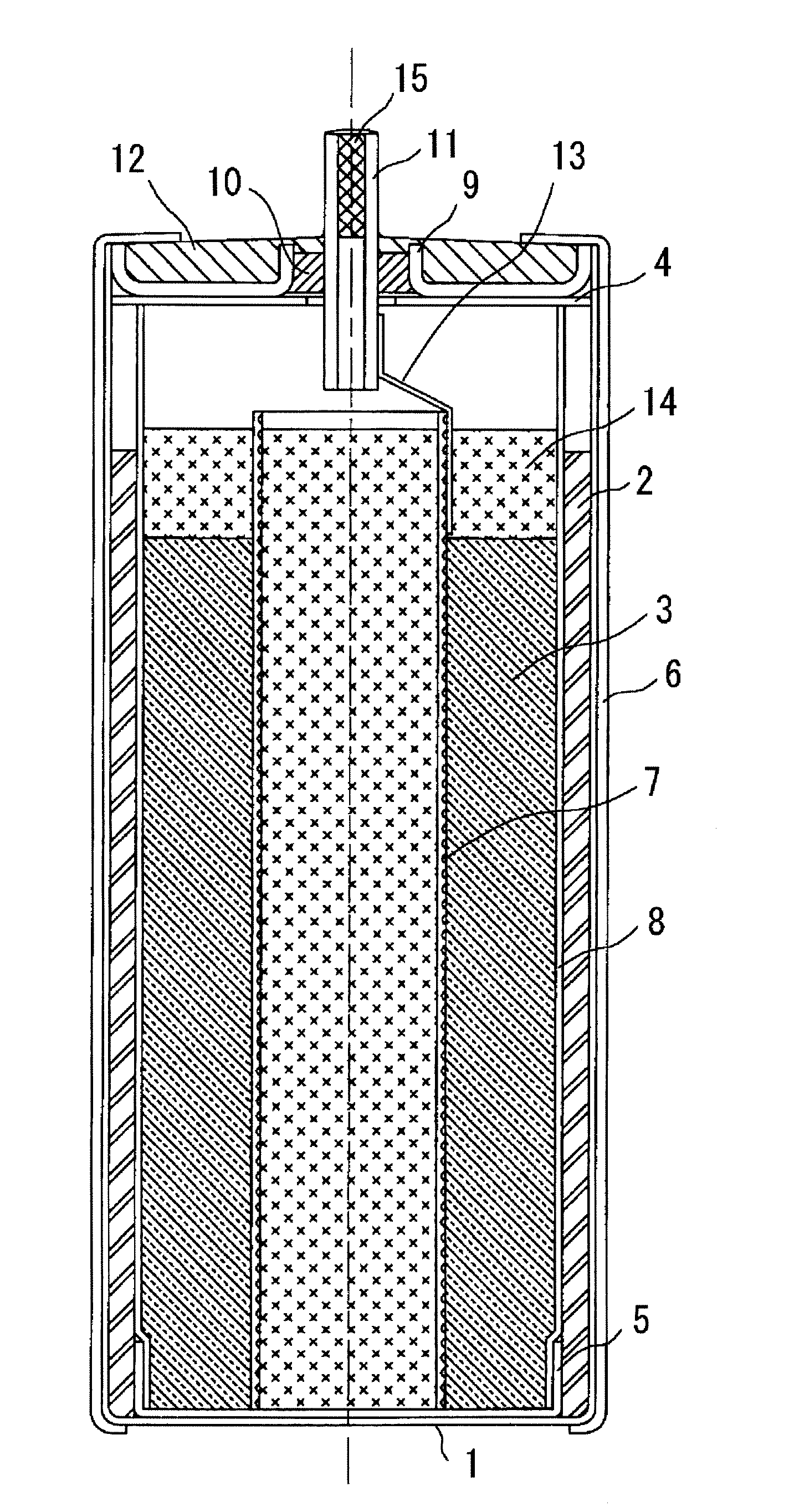Battery With Nonaqueous Electrolyte
a non-aqueous electrolyte, battery technology, applied in the direction of non-aqueous electrolyte cells, cell components, electrical apparatus, etc., can solve the problems of increased battery impedance, temporary decrease of battery voltage, equipment using the battery being miss-operated, etc., to achieve excellent pulse characteristics, more effectiveness, and the effect of increasing the
- Summary
- Abstract
- Description
- Claims
- Application Information
AI Technical Summary
Benefits of technology
Problems solved by technology
Method used
Image
Examples
example 1
[0028]FIG. 1 shows a cross section of the battery of examples and comparative examples according to the present invention. Also FIG. 1 shows a cross section of A size of thionyl chloride·lithium battery using a lithium as a negative pole acting substance and thionyl chloride as a positive pole acting substance.
[0029]In the FIG. 1, reference numeral 1 denotes a battery can made of 16 mm diameter of stainless steel doubled as a negative pole terminal, and a tubular negative pole 2 is press-bonded to the inner surface of said battery can. Reference numeral 3 denotes a porous carbon positive pole, which is consisting of 45 wt % of acetylene black, 45 wt % of furnace black and 10 wt % of poly-tetra-fluoro-ethylene being kneaded with liquid mixture of water and ethanol, and being formed of 10 mm diameter and 35 mm height around the positive pole current collector 7, and being vacuum dried during 8 hours at 150° C. The positive pole current collector 7 is made of an expanded metal of nicke...
example 2
[0033]The molality of added bismuth chloride is 0.07 mmol / kg. Except it, a battery was constructed in the same manner as the example 1.
example 3
[0034]The molality of added bismuth chloride is 0.4 mmol / kg. Except it, a battery was constructed in the same manner as the example 1.
PUM
| Property | Measurement | Unit |
|---|---|---|
| diameter | aaaaa | aaaaa |
| height | aaaaa | aaaaa |
| diameter | aaaaa | aaaaa |
Abstract
Description
Claims
Application Information
 Login to View More
Login to View More - R&D
- Intellectual Property
- Life Sciences
- Materials
- Tech Scout
- Unparalleled Data Quality
- Higher Quality Content
- 60% Fewer Hallucinations
Browse by: Latest US Patents, China's latest patents, Technical Efficacy Thesaurus, Application Domain, Technology Topic, Popular Technical Reports.
© 2025 PatSnap. All rights reserved.Legal|Privacy policy|Modern Slavery Act Transparency Statement|Sitemap|About US| Contact US: help@patsnap.com


